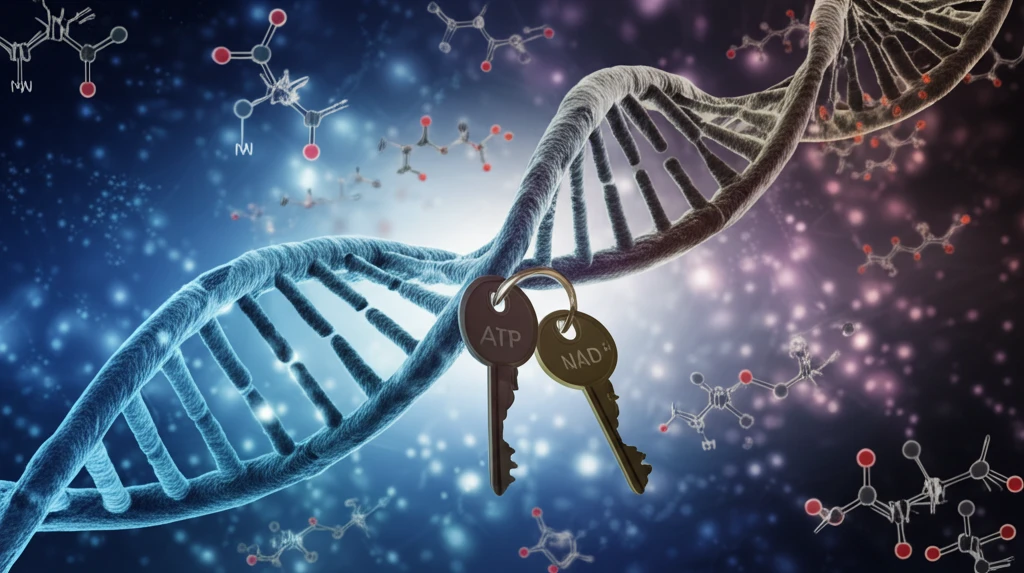
Unlock Cellular Secrets: A New Era in ATP and NAD+ Detection
"Discover how a groundbreaking qPCR assay is revolutionizing the detection of ATP and NAD+, offering unprecedented sensitivity and selectivity for advancing biological research."
In the ever-evolving world of biological research, the ability to detect and measure small biological molecules has become increasingly critical. Adenosine triphosphate (ATP) and nicotinamide adenine dinucleotide (NAD+) are two such molecules that play pivotal roles in numerous cellular functions. ATP, the primary energy currency of the cell, is involved in everything from muscle contraction to nerve impulse transmission. NAD+, on the other hand, is a key player in redox reactions, cellular signaling, and DNA repair. Understanding their dynamics is crucial for unraveling the complexities of life.
Traditional methods for detecting ATP and NAD+ have often fallen short, struggling with limitations in sensitivity, selectivity, and ease of use. These shortcomings have hindered our ability to fully explore the roles of these molecules in various biological processes and diseases. Imagine trying to understand the intricate workings of a city's power grid with only a faulty voltmeter—the insights would be limited and potentially misleading.
But now, a beacon of hope has emerged in the form of a novel ligation-based qPCR amplification assay. This innovative approach promises to overcome the limitations of existing methods, offering a more sensitive, selective, and convenient way to detect ATP and NAD+. Let's delve into the details of this groundbreaking assay and explore its potential to revolutionize biological research.
How Does This Innovative qPCR Assay Work?

The new assay leverages the power of quantitative polymerase chain reaction (qPCR) in conjunction with DNA ligation. qPCR is a highly sensitive technique that allows researchers to measure the amount of a specific DNA molecule in a sample. DNA ligation, on the other hand, is the process of joining two DNA fragments together.
- Splitting the DNA: The researchers designed two short DNA fragments (DNA1 and DNA2) that, when combined, form a longer DNA sequence. However, these fragments are initially separate.
- The Role of a Template: A third DNA molecule, called a template (cDNA), is introduced. This template is designed to bind to both DNA1 and DNA2, bringing them into close proximity.
- Ligation Activation: In the presence of either ATP or NAD+ and the appropriate DNA ligase enzyme (T4 DNA ligase for ATP, E. coli DNA ligase for NAD+), DNA1 and DNA2 are joined together (ligated) to form a complete DNA strand.
- qPCR Amplification: The ligated DNA then serves as a template for qPCR, where it is amplified and measured. The amount of amplified DNA is directly proportional to the amount of ATP or NAD+ in the original sample.
Looking Ahead: Applications and Future Directions
This novel qPCR assay holds immense potential for advancing our understanding of cellular processes and disease mechanisms. By providing a more sensitive and selective way to detect ATP and NAD+, researchers can now explore a wide range of biological questions with greater precision. From unraveling the complexities of metabolic disorders to developing new diagnostic tools for cancer, the possibilities are endless. As technology advances, expect to see even more sophisticated applications of this assay, paving the way for a new era of discovery in biological research.
